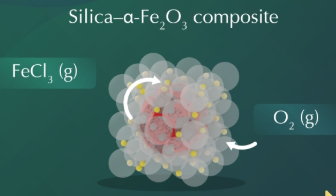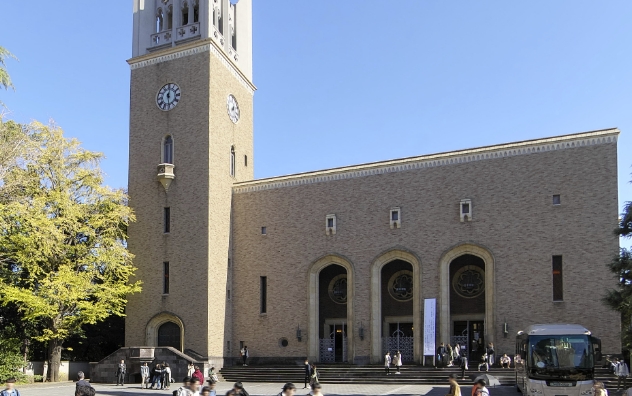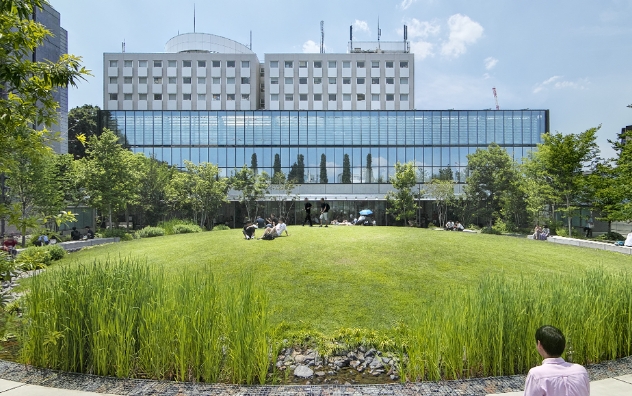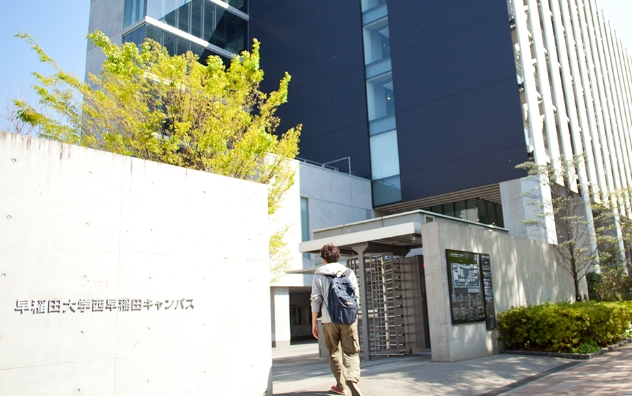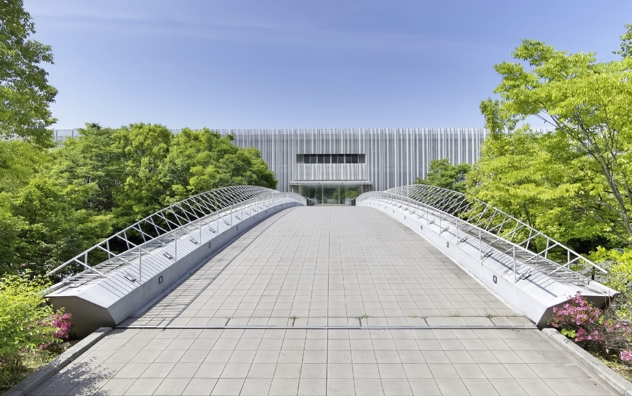A Novel Technology to Control Crystallinity of Pore Walls
Mon, Aug 18, 2025-
Tags
A Novel Technology to Control Crystallinity of Pore Walls
Researchers synthesize quasi-single-crystalline inverse opal α-Fe2O3 via FeCl3 precursor diffusion and oxidation in nanospaces
Nanoporous metal oxides have a wide variety of applications, such as catalysts, electrodes, energy materials, sensors, and biomaterials. Recently, a team of researchers has demonstrated a novel synthesis method for their efficient and desirable preparation. Specifically, they prepared difficult-to-prepare quasi-single-crystalline inverse opal α-Fe2O3, demonstrating that crystal growth occurs in nanospace due to volatilization and oxidation of metal chlorides. This technology is expected to further the development of catalytic and energy conversion materials for carbon neutrality.
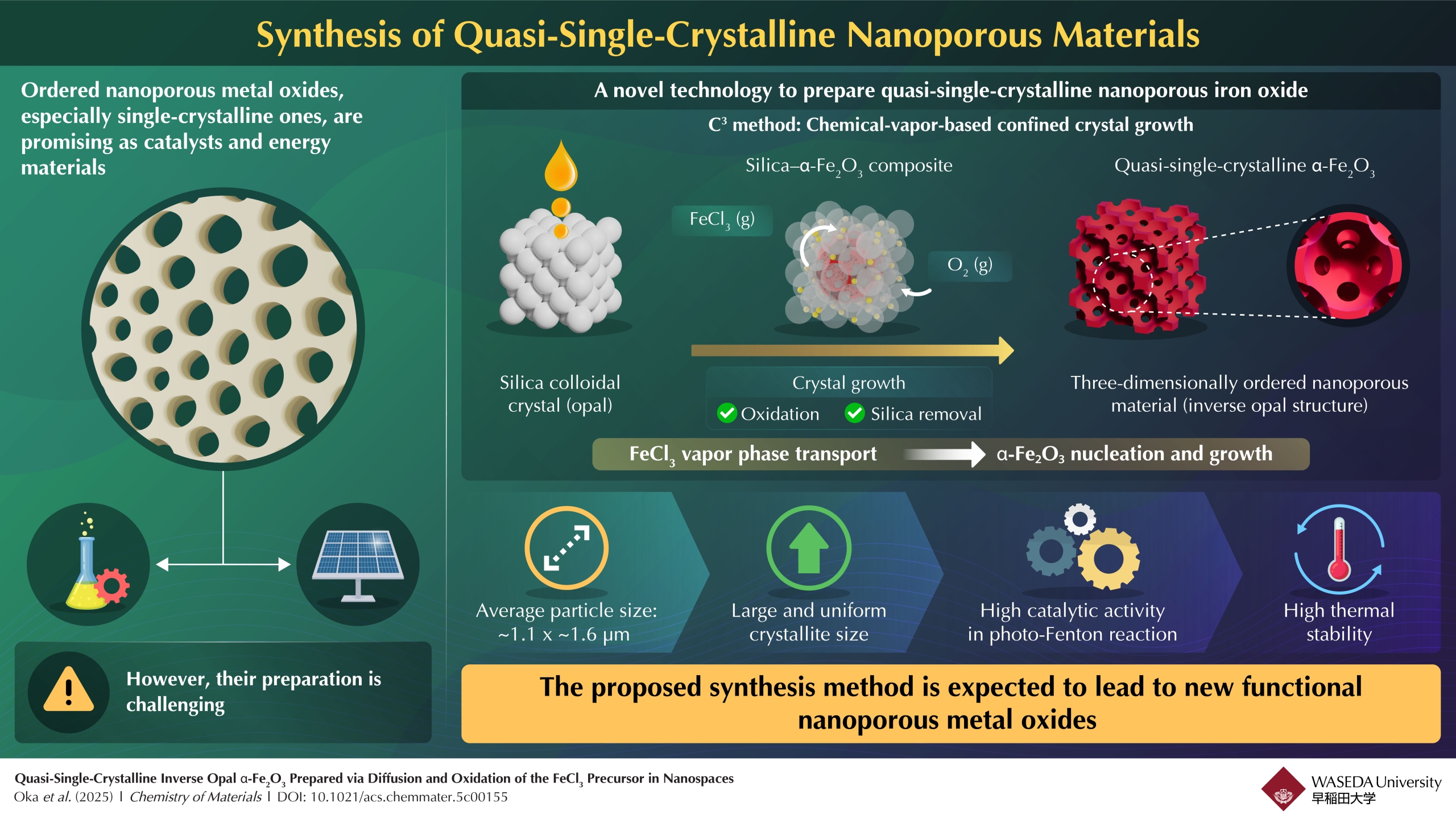
Image title: Towards Single-Crystalline Nanoporous Materials
Image caption: Researchers successfully prepared a quasi-single-crystalline nanoporous iron oxide with excellent thermal stability and catalytic performance.
Image credit: Takamichi Matsuno from Waseda University
License type: Original content
Usage restriction: Cannot be reused without permission
Metal oxide materials with nanoscale pores have been applied and studied in a wide range of fields, including as catalysts, adsorption and separation materials, and energy materials. Among them, single-crystalline nanoporous metal oxides—with interconnected nanopores in a single crystal—are especially lucrative. They have recently attracted attention as unique materials that combine the desirable properties of nanoporous materials, such as high specific surface area and large pore volume, with those of single crystals.
While metal oxide nanoporous structures have been conventionally synthesized by replicating the nanostructure of surfactant micelles, silica, and carbon as templates, the preparation of single-crystalline nanoporous materials is generally difficult, with limited successful approaches. There are still unresolved issues, such as difficulty in controlling the nucleation and crystal growth process inside templates, as well as limited compositions that can be synthesized.
Now, a team of researchers from the Department of Applied Chemistry, Faculty of Science and Engineering, Waseda University, Japan, led by Assistant Professor Takamichi Matsuno, including Daichi Oka, Kohei Takaoka, and Professor Atsushi Shimojima, has developed a novel method for synthesizing difficult-to-prepare single-crystalline nanoporous metal oxides with simultaneous control of their composition, porous structure, and crystal size. These findings were made available online and published in the journal Chemistry of Materials on 30 June 2025.
According to Matsuno, “Iron is an abundant metal on Earth, and iron oxides are used in various applications, including catalysts, electrodes, magnetic devices, and sensors. Therefore, we focused on α-Fe2O3, a type of iron oxide, and achieved simultaneous control of its pore structure and crystallite size through chemical-vapor-based confined crystal growth (C3) method.”
Herein, the team impregnated an FeCl3 precursor aqueous solution and dried it in a porous material composed of silica nanospheres. As a result, an oxide was formed by heating it in the air. After that, the researchers dissolved the silica template in a basic aqueous solution to obtain three-dimensionally ordered nanoporous quasi-single-crystalline α-Fe2O3 with an ellipsoidal morphology and average particle dimensions of ~1.1 μm (minor axis) and ~1.6 μm (major axis).
“Heating iron chlorides inside the template causes nucleation and crystal growth of α-Fe2O3 via FeOCl by vapor phase transport. As a result, we obtained nanoporous α-Fe2O3 with a larger and more uniform crystallite size than that prepared using the previously reported Fe(NO3)3 hydrate precursor,” points out Matsuno.
Furthermore, the prepared nanoporous material exhibited high heat resistance as well as high catalytic activity in the photo-Fenton reaction compared to the conventional nanoporous analogues, showcasing the usefulness of nanoporous structures with single-crystalline porous walls.
In this way, the results of this research provide a new way to enhance the performance of nanomaterials and are expected to have a ripple effect in a wide range of fields, including catalysts and energy conversion materials that contribute to the realization of carbon neutrality. Moreover, this work addresses a significant challenge in materials synthetic chemistry, thereby paving the way for the creation of a series of materials with excellent properties through precise and flexible control.
Overall, the proposed C3 method of volatilizing and oxidizing metal chlorides within nanoporous materials potentially offers a universal approach to controlling the factors that affect their properties.
Reference
Title of original paper: Quasi-Single-Crystalline Inverse Opal α‑Fe2O3 Prepared via Diffusion and Oxidation of the FeCl3 Precursor in Nanospaces
DOI:10.1021/acs.chemmater.5c00155
Journal: Chemistry of Materials
Article Publication Date: 30 June 2025
Authors: Daichi Oka1, Kohei Takaoka1, Atsushi Shimojima1,2,3, and Takamichi Matsuno1,2,3
Affiliation:
1Department of Applied Chemistry, Faculty of Science and Engineering, Waseda University
2Kagami Memorial Research Institute for Materials Science and Technology, Waseda University
3Waseda Research Institute for Science and Engineering, Waseda University
About Assistant Professor Takamichi Matsuno
Takamichi Matsuno is an Assistant Professor at the Department of Applied Chemistry, Faculty of Science and Engineering, Waseda University, Japan. He obtained his Ph.D. degree from Waseda University in 2021. His research interests include inorganic compounds and inorganic materials chemistry. He has authored more than 20 research papers in these fields and has been cited about 150 times. Matsuno was awarded the Best Presenter Award (APL Awards) during Materials Oceania 2023. He has been a member of the International Sol-Gel Society since 2024.


